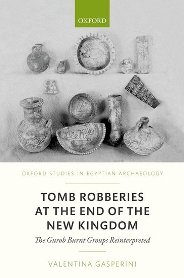| Main » Ad Board » ДРЕВЕН ЕГИПЕТ И АФРИКА » Археология |
Valentina Gasperini - Tomb Robberies at the End of the New Kingdom. The Gurob Burnt Groups Reinterpreted
| 04.10.2019, 12:22 | |
Настоящотата монография представлява анализ на феномена "обгорени групи" погребални предмети от гробния инвентар в Древен Египет. Основава се на находките в Гуроб и аналозите им на други места. Според авторката те са свидетелство за голямо разпространение на мародерското ограбване на гробници в края на Новото царство.
- на английски език, от MEGA, формат PDF.Сваляне с ляв бутон (downloading by left button) и после през бутона Download.
| |
| Views: 1221 | Placed till: 04.11.2019 | Rating: 3.0/1 | |

